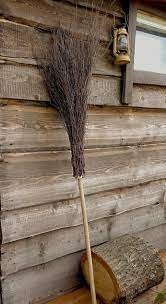Cleanup Monday - Plough Monday
- Christa Berger
- Jan 7, 2023
- 4 min read
The first Monday after Epiphany used to be the cleaning and sweeping day, also known as Plow Monday (in England; Brabant, Belgium), Women's Monday or "Lost Monday" (in the Netherlands) and was used to repair farm implements. In England in particular, it was customary to carry a plow through the village to mark the beginning of the farming year. At the concluding village festival, the bean king and bean queen opened the dance. On the Monday after Epiphany, Tournai (Wallonia) eats the famous rabbit dish “Lundi perdu”. The oldest mention of Lost Monday dates back to 1281.
Plough Monday in England, heavy ploughing without oxen...
Getting back to everyday life after the holidays...
In addition, Candlemas (February 2nd) was an important date for the change of servants on farms, and the well incorporated farmhands and maids, who knew the customs of the house, were still able to provide valuable service during this time.
Farm women and maids took care of the laundry and clothing, patched, and repaired them. So, after the quiet Christmas season, we returned to our busy everyday life.
It's hardly surprising that after the holidays there is the necessity and requirement to clean up. If you take the superstition in German-speaking countries seriously, no laundry may be washed during the rough nights (Twelve Nights) and certainly not hung up outside - especially not bed linen - and no spindles and needles may be used. One must not work, otherwise misfortune will come to home and yard. It is forbidden to touch and process flax, otherwise Mother Holle will be angry, and rats and mice will attack the house... 🐭🐭🐭
Even if you don't follow these rules, there's still a lot of work to be done after Christmas, and I'm actually already looking forward to everyday life after the holidays, no matter how nice it was with my family and all my friends and relatives.
People used to tie new brooms during the rough nights because they were supposed to be particularly good and last a long time. They are good to use on Clean-up Monday! 🧹 The old brooms, they burned.
The Christmas tree has to go today...
Even if there is a date for removing the Christmas tree that is further away - Candlemas Day - it is cleared at home today. I'm sad that the Christmas tree 🎄 has to be removed now, but the space is simply needed to work, and this time it's really pinning off a lot. Our cat also loves the Christmas tree very much! He probably thinks we put it down for him... 😊

Our cat just loves the Christmas tree, sometimes he sleeps under it all day.
Our Christmas trees, one stands in front of the house and the other in the living room, are not taken to the collection point cold-heartedly. Now they are standing together in front of the house and will delight us for a few more weeks until Candlemas. Then they are put away to dry.
My grandfather used to make swizzlesticks out of the branches of the Christmas tree. My grandmother "examined" the Christmas tree with him very carefully: How many pieces can be made from it? Sometimes they turned out to be pretty small and thin, because my grandfather didn't want to disappoint my grandmother by "delivering" too few swizzlesticks.
How do you make fir swizzle sticks?
The branches of the tree tops are cut to the right length. Thicker branches can also be used. Then remove the needles and bark. The bark can be 'peeled off' with a knife. Then boil the swizzle sticks for about 10 minutes. Resin comes out. The bark residue becomes very soft and can now be easily peeled off. That was work that we children often did and which was great fun!
When the swizzle sticks has dried after a few minutes, sand it down a bit with sandpaper. For a longer shelf life rub with linseed oil (or another natural oil, I use expired, bitter olive oil) and dry with a cloth.
But first the tree has to dry properly, with us it usually stood outside for a few weeks before my grandfather made the swizzle sticks.
How to dispose of Christmas trees?
Of course, the Christmas tree can be taken to a public collection point. Christmas trees can be used in many other ways, for example they are given to goats to nibble on, the needles can be used for bath salts, teas, the branches as frost protection. The animals in zoos, such as elephants, are also very happy about discarded Christmas trees.

Elephants in Schönbrunn Zoo in Vienna (www.weihnachtsmarkt.co.at/FOTOFALLY)
We cut our Christmas tree in spring and use it to light the Easter Fire. On wet and dirty paths and terrain you can put the dry brushwood to step on.

The cycle of nature...
By the way: In the pile dwelling museum of Fiavé (UNESCO World Heritage) on Lake Carera near Trento you can admire 3,500 year old swizzle sticks made of fir wood.

3,500 year old wooden swizzle stick (Bronze Age) from the pile dwelling museum of Fiavé, Trento
[photo O.Michelon]
















































Opmerkingen